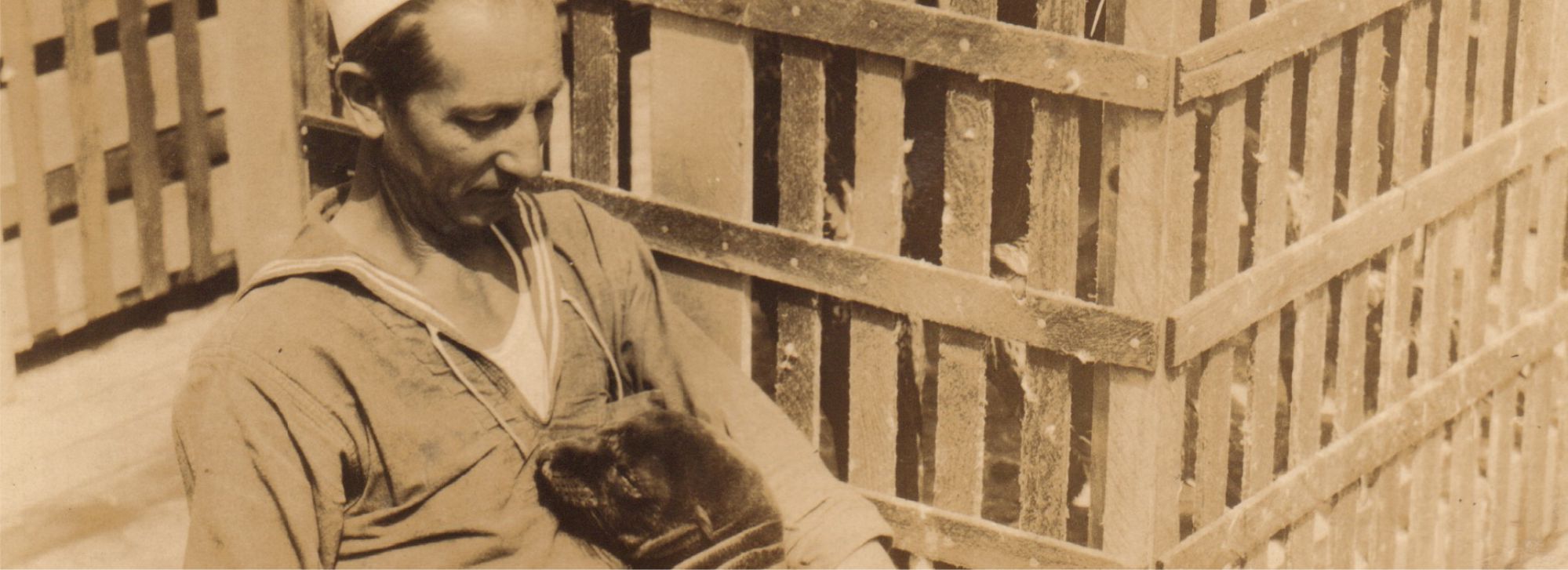On the Nourmahal
Every document can be understood as an individual piece, notable for its historical importance, its aesthetic beauty, its uniqueness... Some of them manage, at the same time, to summarize a whole story in themselves: in their individuality, they condense an entire reality. This is the case of a photo taken during the famous Nourmahal Expedition.
The USS Nourmahal was a ship of about 80 m in length, built in 1928 as a pleasure yacht for the American billionaire Vincent Astor at the Krupp shipyard in Kiel, Germany. She was the third Astor family yacht to bear that name (which in Hindi means "Light of the Palace" and belongs to the heroine of a poem in Lalla Rookh, a novel by Thomas Moore from 1817). The cover of Time magazine for February 6, 1928, proclaimed it the best of her time.
In 1940 the vessel was acquired by the US Coast Guard for one million dollars, and in 1943 it was converted by the US Navy into a gunboat to face World War II. Luckily for her, she never needed to go into combat. In 1946 she was decommissioned, and in 1948 she was abandoned. Her story ended in 1964, when she was sold to scrap dealers for $ 27,000 and disarmed.
Between 1928 and 1942, beyond merely recreational uses, the ship was used for philanthropic purposes, including serving as a means of transportation for various naturalist expeditions. Specifically, between March 23 and May 2, 1930, Vincent Astor took a group of American scientists to Galapagos, Cocos and Panama on a sample collection trip: the Nourmahal Expedition. The researchers belonged to the New York Aquarium, the American Museum of Natural History, and the Brooklyn Botanical Garden.
Copies of the photographs taken during that expedition are kept in the audiovisual collection of the Charles Darwin Foundation (CDF) Library, Archive and Museum, in an album entitled precisely "Nourmahal". The images show, among other things, details of the journey, panoramic views of the forested and exuberant nature of the upper part of Santa Cruz Island, and moments of the identification, collection and handling of specimens in Galapagos.
And among them, one that is curious is the photo of a sailor with a sea lion pup on his lap.
Among the manuscripts in the special collection of the CDF Library, Archive and Museum, there is a document which happens to be complementary to the "Nourmahal" album: a typewritten copy of the field diary of James P. Chapin, one of the scientists who participated in the trip to Galapagos. The very careful notes reflect the day-to-day life of that researcher, an American ornithologist at the American Museum of Natural History. And among them appears the following, noted on April 10, 1930:
In 3 hours we had rounded Seymour Island and stopped opposite the passage between North Seymour and South Seymour. Here there is a low sandy islet with several patches of rocks where the sea lions abound. Most of us visited it by launch. Three young sea lions were caught.
There is no other mention of captures of sea lions in the entire journal. So, thanks to some writings scribbled in a field notebook almost a century ago, we can know that the cub in the photo was born in that strip of sand known as "Mosquera Islet", between the Seymour Islands.
We could probably trace the animal and find out where its days ended. And even know the name of the sailor who held it in the image. Because his role, ship's carpenter, appears in Chapin's diary, in the entry for May 1, 1930:
Photos of menagerie on upper deck. Bronson drawing legs of tortoise (suspended). Ship's carpenter holding sea-lion.
This is how dense and rich are the memory webs that can be woven inside libraries, archives and museums: in a single piece, the history of a scientific expedition is summarized and, in a certain way, the spirit of an era and the way natural sciences were thought.
[See also: Letter 3, Letter 12].
Aa.Vv. Nourmahal Album. [Photograph]. [N.d.] : Aa.Vv., [1930]. 76 pp. : b/w ill. : 30 x 45 cm. DDC 508. Well preserved.
Subject categories: History of Galapagos | History of science | Natural history
Keywords: Expeditions | Memory | Photos | Travels
Time framework: 1930
Text & picture: Edgardo Civallero (edgardo.civallero@fcdarwin.org.ec).
Publication date: 1 December 2021
Last update: 1 December 2021
